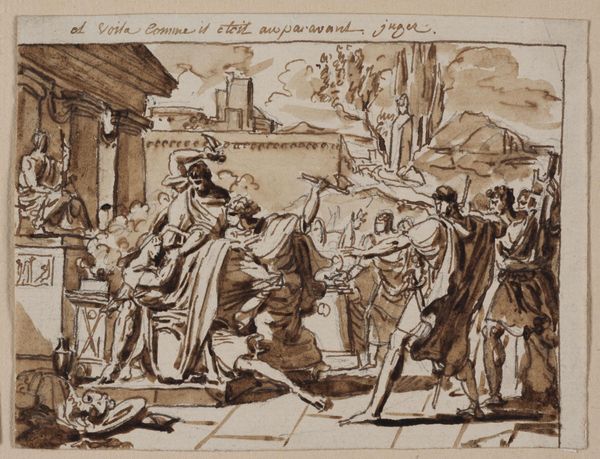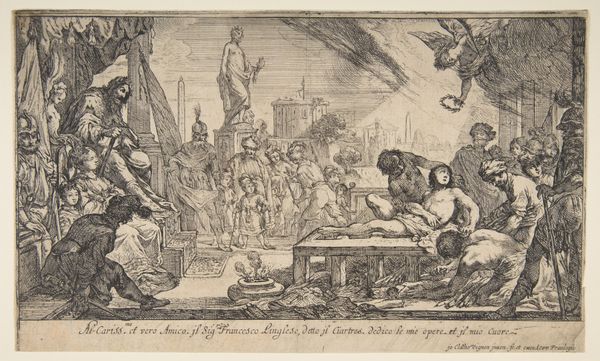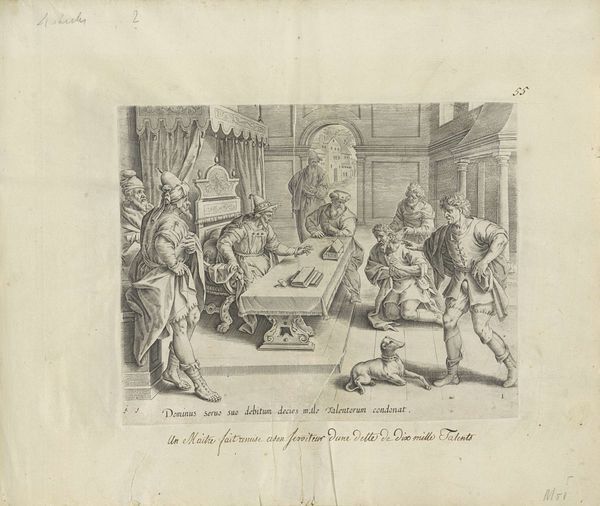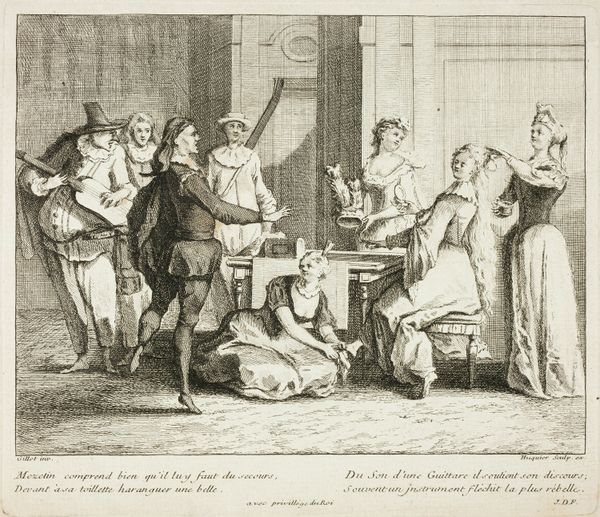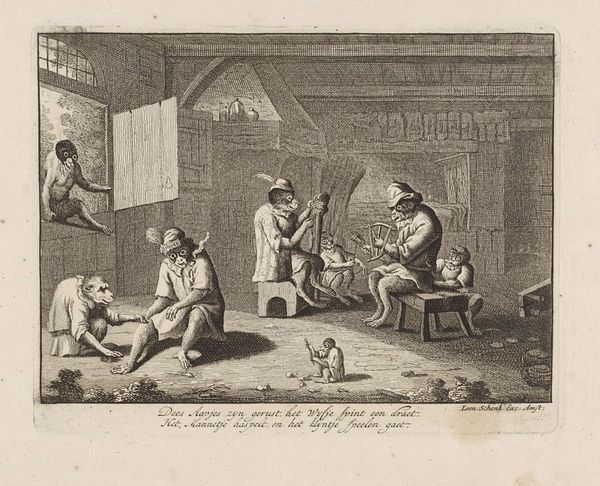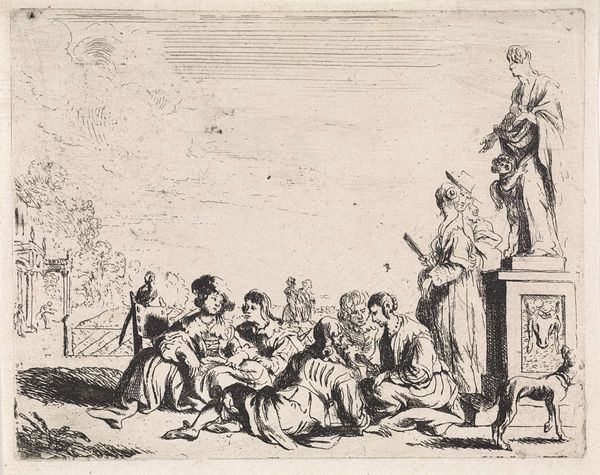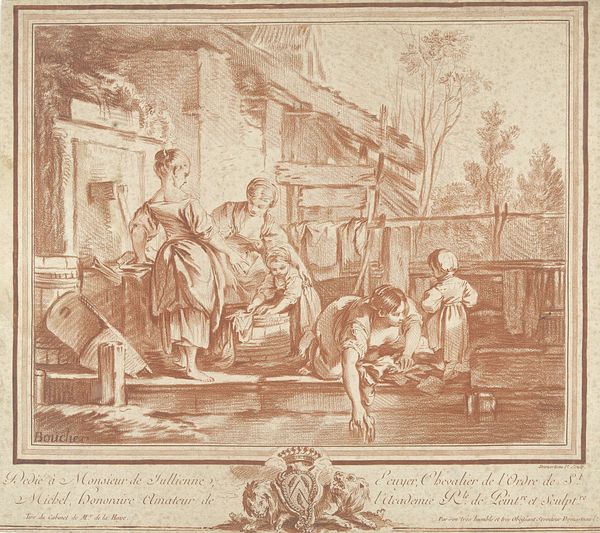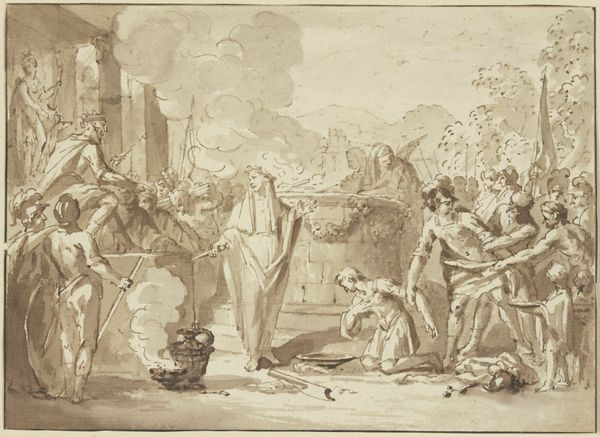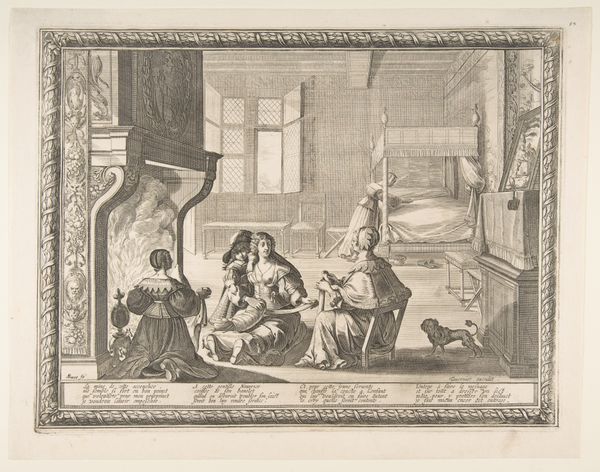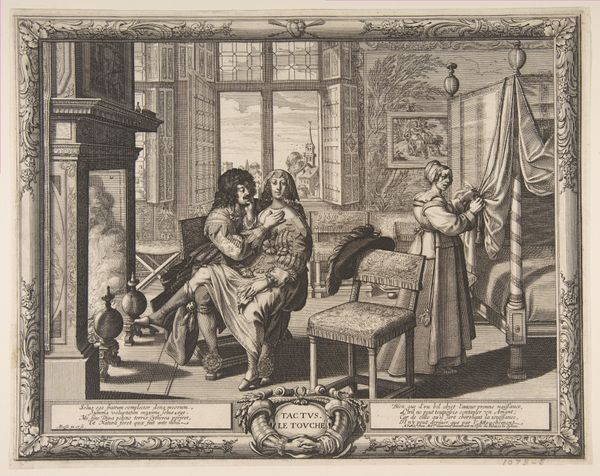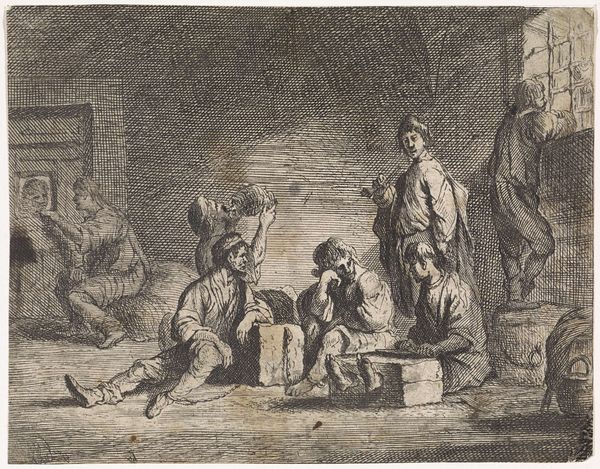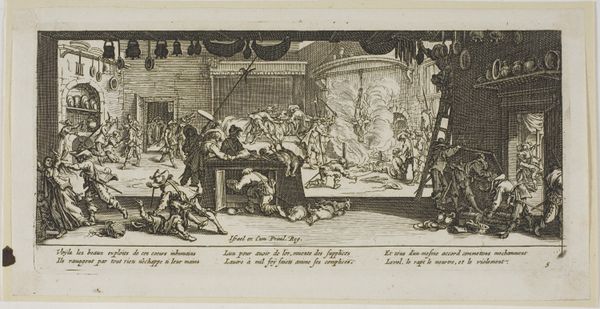
print, engraving
#
narrative-art
# print
#
figuration
#
line
#
genre-painting
#
history-painting
#
engraving
Copyright: National Gallery of Art: CC0 1.0
Curator: This is "Interior of a Military Chamber," an engraving, showing us a moment in the life of soldiers, probably by Baron Louis-Albert-Guillain Bacler d'Albe, though that remains unconfirmed. Editor: It's a fascinating scene, chaotic but somehow intimate. The sharp lines of the engraving give it a raw, almost journalistic feel. There's a definite tension between order and disorder here, isn't there? Curator: Absolutely. Look at how Bacler d'Albe details the accumulation of objects: the rifles stacked rigidly against the wall contrasting sharply with the haphazard arrangement of personal belongings on the shelf. And even how one soldier receives a rather crude haircut. It’s about labor, but also leisure. Editor: Those stark lines remind me of traditional depictions of sacrifice and honor in classical imagery, though turned upside down. Note the man in the center receiving his "wounds," though clearly not in battle. The visual language of glory repurposed for the mundane reality of military life. It reminds one that not all glory is bright. Curator: I think what the work reveals is how even within military structures, those rigid hierarchical lines become blurred. Consider the communal aspect of the activities. Even haircuts are turned into a public performance. One loses all sense of one’s material body when being shaved and dressed and so forth in public. Editor: Yes, the intimacy, like the haircutting and helping each other with the sheets—is definitely there, but there’s a layer of something darker in the visual language, don’t you think? The engraving gives us that heavy sense of the toll military life would demand. The weapons loom large, constantly present, even if unused in this moment. It also reveals the reality and the cost. Curator: Agreed. It seems less an idealization of military life and more a grounded observation of its multifaceted existence, highlighting the contrast of imposed discipline and lived reality, the equipment required to keep that going and the effect that it all has. Editor: It reminds us that these visual materials are not passive documents, they shape how we understand and remember history and what counts in the material experience. Curator: And for me, it showcases that careful dance between structure, control, labor, leisure, equipment and its inhabitants’ social negotiations. A story captured through lines. Editor: And through symbols laden with shared, yet subverted meaning, of shared visual memory about the costs involved.
Comments
No comments
Be the first to comment and join the conversation on the ultimate creative platform.
